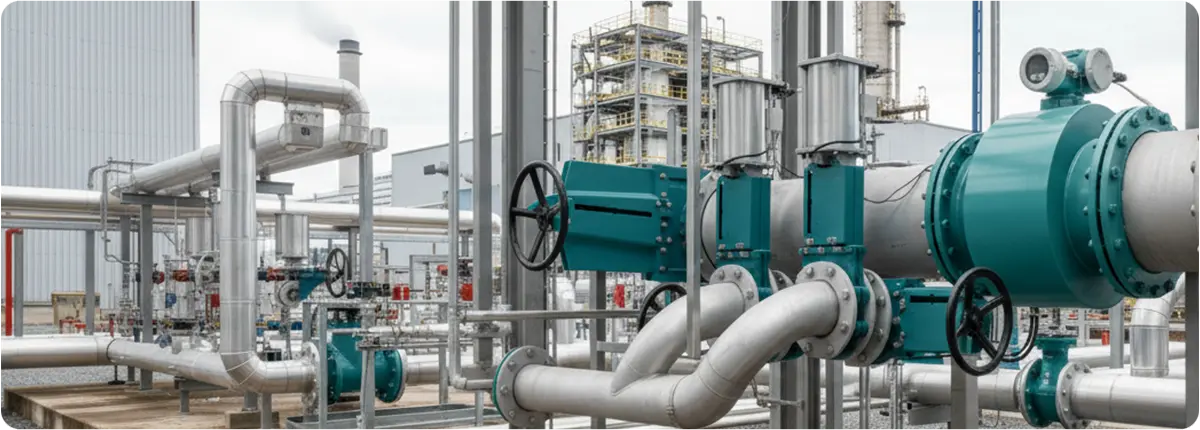Knife gate valves are a specialized type of shut-off valve designed to handle fluids with suspended solids, slurries, or fibrous materials. Unlike standard gate valves, which use a wedge-shaped gate, knife gate valves use a thin, sharp-edged blade that can cut through thick media, making them indispensable in industries such as wastewater treatment, mining, pulp & paper, and chemical processing.

WORKING PRINCIPLE
The core principle of a knife gate valve is simple yet effective. When actuated, a flat blade (the ‘knife’) slides down into the valve seat, cutting through the media and forming a tight seal. In the open position, the blade retracts completely, allowing for a nearly unobstructed flow path.
- Open position: Full-bore flow with minimal pressure drop.
- Closed position: The knife-shaped disc cuts through solids, providing reliable shutoff.
DESIGN FEATURES
Knife gate valves are built for durability in harsh operating environments:
- Body construction: Typically cast iron, ductile iron, carbon steel, or stainless steel.
- Gate design: Sharp-edged stainless steel blade to shear through solids.
- Seat options: Soft seats (elastomer, PTFE) for tight shutoff, or metal seats for high-temperature/abrasive applications.
- Actuation: Manual (handwheel), pneumatic, hydraulic, or electric actuators.
- Sizes & ratings: DN 50–DN 1200, usually up to PN 10 or ANSI Class 150.
APPLICATIONS
- Wastewater treatment plants: Managing sludge and thick waste streams.
- Mining industry: Controlling abrasive slurries of ore, sand, and tailings.
- Pulp & paper mills: Handling fibrous pulp mixtures.
- Chemical industry: Managing corrosive fluids with solid particles.
- Food industry: Processing thick pastes, starches, or viscous ingredients.
ADVANTAGES
- Cuts through solids and fibrous materials.
- Compact design with minimal space requirements.
- Low-pressure drop when fully open.
- Cost-effective for large-diameter pipelines.
- Easy to maintain with replaceable seats and seals.
LIMITATIONS
- Not suitable for high-pressure applications above PN 10.
- Slower operation compared to quarter-turn valves.
- Not ideal for throttling; mainly on/off service.
- Seat wear with abrasive slurries requires maintenance.
SELECTION CRITERIA
Factors to consider:
- Media characteristics: solids, abrasiveness, chemical composition.
- Pressure and temperature ratings.
- Actuation method: manual vs. automated.
- Sealing requirements: soft seats vs. metal seats.
- Installation space: vertical installation recommended.
COMPARISON WITH STANDARD GATE VALVES
- Knife gate valve: Designed for slurry and solids, sharper disc, low-pressure ratings.
- Standard gate valve: Designed for clean liquids and gases, higher pressure ratings, wedge-shaped gate.
ENGINEERING NOTES
The flow coefficient (Cv) of a knife gate valve is relatively high in the fully open position:
Q = Cv * sqrt(ΔP / SG)
- Q = Flow rate (GPM)
- Cv = Valve flow coefficient
- ΔP = Pressure drop (psi)
- SG = Specific gravity of fluid
Recommended slurry velocity: 1.5–3.5 m/s.
CONCLUSION
Knife gate valves play a vital role in industries dealing with challenging fluids. Their unique design enables them to handle slurries, viscous materials, and fibrous suspensions effectively. Proper selection ensures reliable operation, safety, and long service life.
